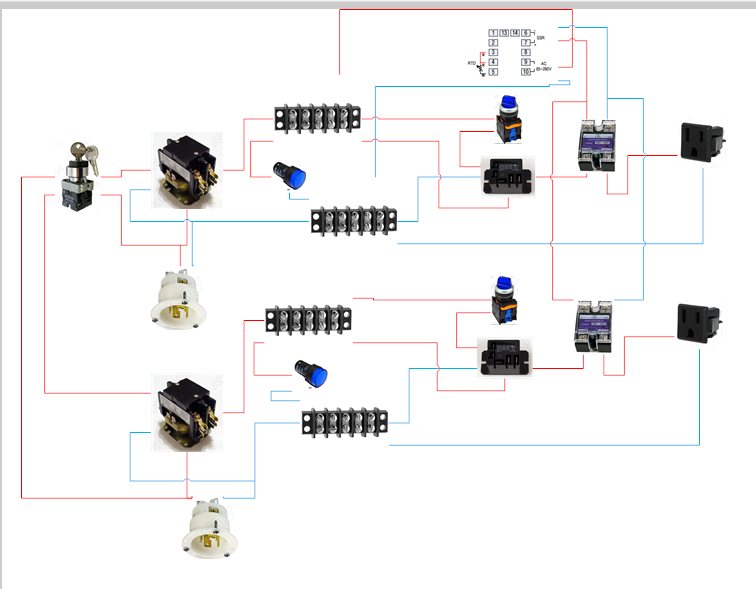- Joined
- Dec 16, 2015
- Messages
- 935
- Reaction score
- 355
I'm in the middle of piecing together a RIMS for my BIAB setup. Normally I just do everything over propane outside since I'm on the second story of an apartment. But with the weather getting cooler I'm really liking the idea of being able to be inside, or just on the upper deck more and more. Propane burners on second story decks are a huge no, so I've been looking at electric.
My questions. I only have access to 110V outlets. I have a drier hookup in the basement, but I'm not going to run a chord that long. I'm happy with using 110V for the RIMS, but the boil is where i'm more worried. I have read conflicting reports on trying to do 5gallon+ batches on a single 110V element. Some say it's ok, some say you'll wait forever for a low boil. I'm usually boiling 7+ gallons, so I'm thinking the single element wouldn't be great.
My initial thought was simply run two elements. (assuming I can physically fit them). However the control aspect gets me hung up. With a single element I could simply have one controller. I'd use it in PID mode for RIMS mashing, and then swap the plug to the kettle element and use manual for boil. Is there any way to control two elements off a single controller, or would I really need two controllers? Or to say it another way, could I take my single controller, and use it to send a xx% manual duty cycle to two elements?
Would a better way be to simply run one element off the controller, and have the other wired to just run full power all the time? (with the proper precautions of course).
I realize that I'll need two separate circuits to even think about this, I'm fine running an extension chord from somewhere in the apartment. And I realize everything should have GFCI outlets.
Thanks for the help.
My questions. I only have access to 110V outlets. I have a drier hookup in the basement, but I'm not going to run a chord that long. I'm happy with using 110V for the RIMS, but the boil is where i'm more worried. I have read conflicting reports on trying to do 5gallon+ batches on a single 110V element. Some say it's ok, some say you'll wait forever for a low boil. I'm usually boiling 7+ gallons, so I'm thinking the single element wouldn't be great.
My initial thought was simply run two elements. (assuming I can physically fit them). However the control aspect gets me hung up. With a single element I could simply have one controller. I'd use it in PID mode for RIMS mashing, and then swap the plug to the kettle element and use manual for boil. Is there any way to control two elements off a single controller, or would I really need two controllers? Or to say it another way, could I take my single controller, and use it to send a xx% manual duty cycle to two elements?
Would a better way be to simply run one element off the controller, and have the other wired to just run full power all the time? (with the proper precautions of course).
I realize that I'll need two separate circuits to even think about this, I'm fine running an extension chord from somewhere in the apartment. And I realize everything should have GFCI outlets.
Thanks for the help.




